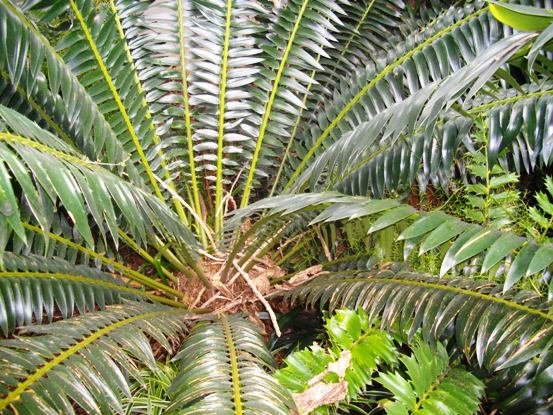Encephalartos transvenosus

The Modjadji cycad, as Encephalartos transvenosus is commonly known, is one of the largest cycads on earth. The stem commonly grows to between 5 and 8 m, but may occasionally reach 13 m (SA Tree List No. 13).
The distribution is quite restricted around Duiwelskloof, now Modjadjiskloof near Tzaneen in Limpopo. It also grows naturally in the Soutpansberg.
The habitat is varied bushveld and long grass on steep, rocky slopes of the mistbelt where the trees form natural forests. Although plant collection and habitat destruction take place, the species is not considered to be threatened in its habitat early in the twenty first century.
The dynasty of legendary Rain Queens, Queen Modjadji of the Balobedu tribe, is expected to continue when an eligible successor becomes available after the last queens passing in 2005. Her duties include presiding over the tribes annual rain-making ceremony in accordance with the hereditary traditions of several centuries.
There are unusual stories about the origins and events surrounding the Rain Queen traditions and succession. She has no husband and is represented by senior indunas of the tribe in dealing with the outside world. When she becomes old, she chooses the time when her title is bestowed upon her eldest daughter... upon which she is said to take poison (Coates Palgrave, 2002; Wikipedia; www.tzaneen.co.za; http://redlist.sanbi.org).

